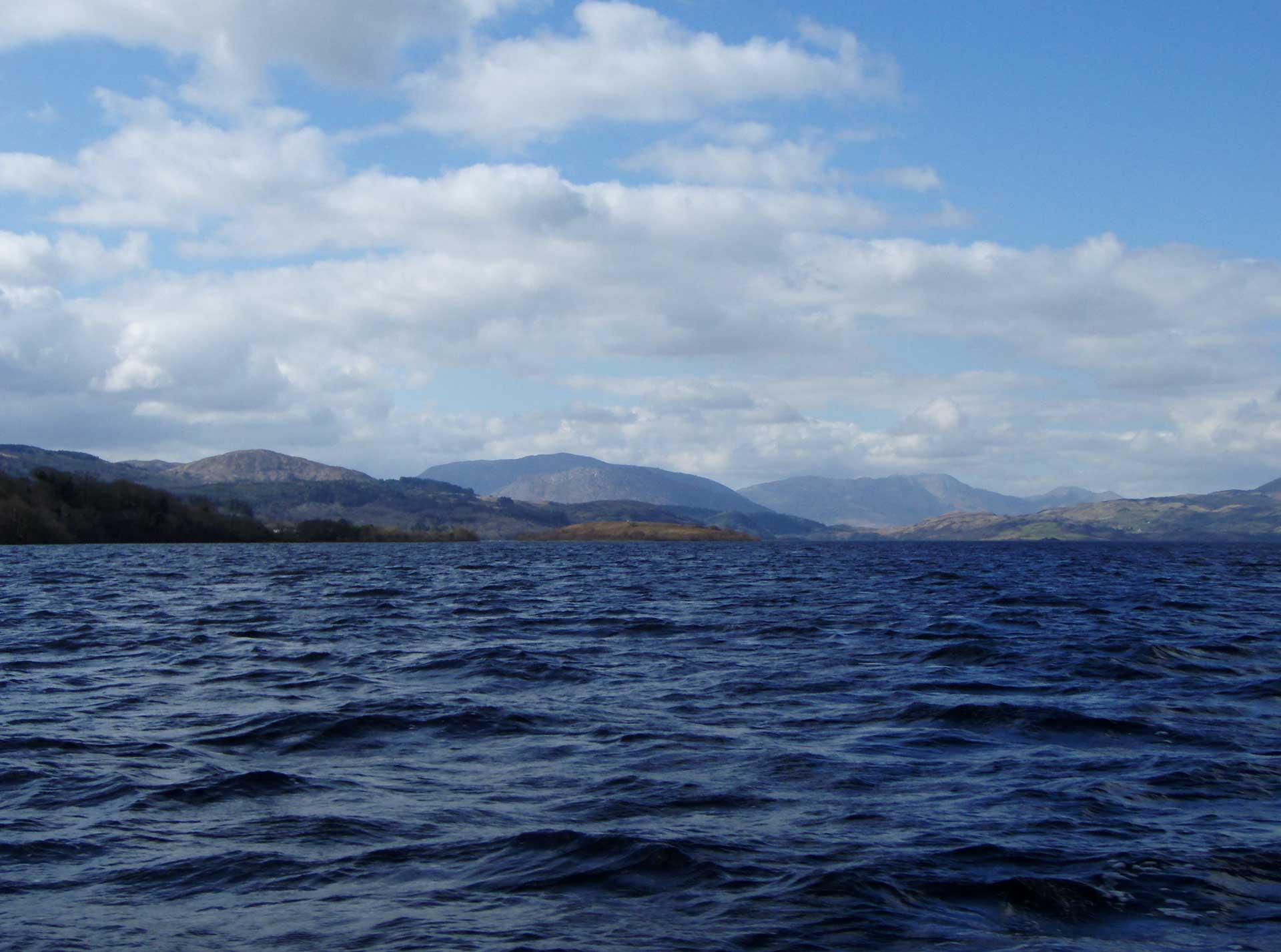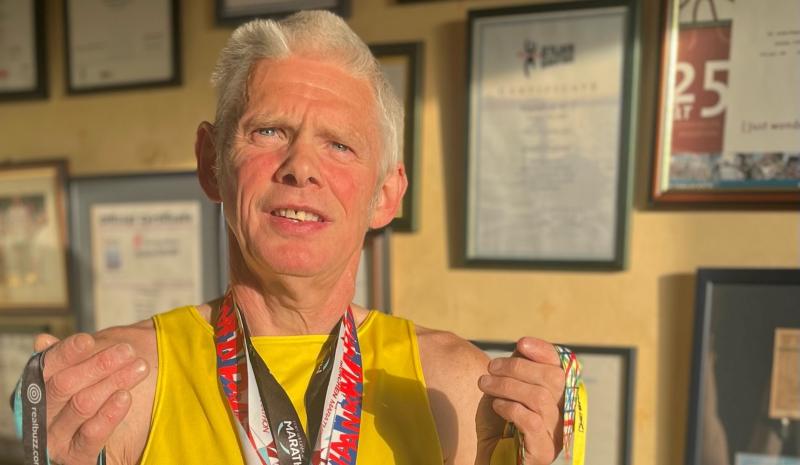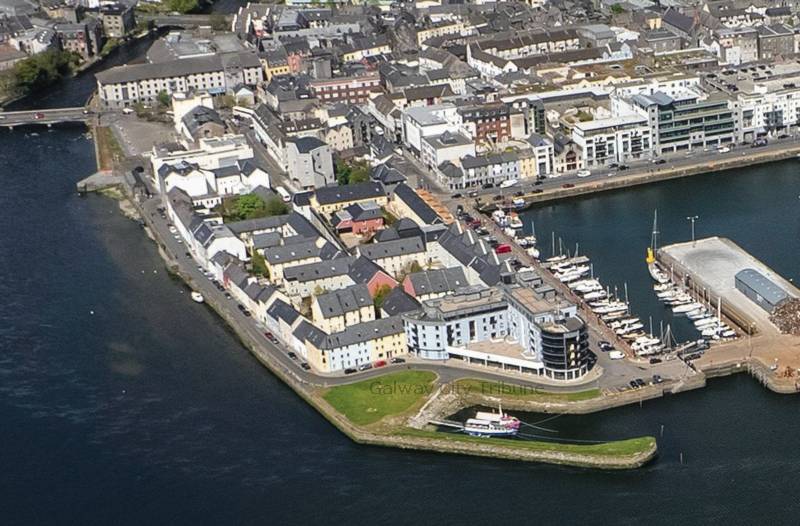News
Corrib ferry plan aimed at alleviating traffic

The delay with the Galway City Bypass has this week turned the spotlight on an alternative project to relieve traffic that was mooted almost 40 years ago.
It would involve a bridge over Lough Corrib that would effectively link Headford with Moycullen and Oughterard – or more realistically a car ferry service that could take up to 300 cars across the lake every hour.
The debate took to the airwaves this week on Galway Bay fm’s Keith Finnegan Show, where the presenter even managed to secure a potential operator for the service from Knockferry to Headford.
Shannon Ferries chief executive Eugene Maher – the man who heads the company which already runs the Killimor to Tarbert crossing of the Shannon estuary – has a ferry ready to go into service if the state gives it the green light.
The difficulty however is that – to remove traffic chaos from the N59 – you would significantly increase car numbers on the approach to the pier at Knockferry or at Kilbeg on the Headford side of the lake.
This mirrors the difficulties encountered with a similar proposal back in 2006, when the plan was granted planning permission by Galway County Council.
The decision was appealed to An Bord Pleanala by An Taisce and a number of residents living in Collinamuck, near Moycullen.
The Board overturned the decision of the local authority on the grounds that the roads accessing the crossings at Kilbeg on the Headford side to Knockferry on the Moycullen side were substandard for the volume of traffic that would be using them.
The Corrib crossing saga dates back to the late 1970s – and into the 1990s – when the provision of a bridge to link Headford with Moycullen and Oughterard regularly raised its head in Dail debates.
There was even a commitment from former Fine Gael leader John Bruton that he would deliver on a Kilbeg/Knockferry bridge if the party were returned to power.
Cllr Thomas Welby from Oughterard recalls the lengthy debates about the issue, when his late father also Cllr Tom Welby was on Galway County Council. “I think the cost of the bridge was around €1 million at the time”.
Asked by Keith Finnegan should it be looked into again, he replied: “We need a connection across the Corrib. There are lots of projects but they seem to be hampered by environmental issues”.
The bridge over the Corrib was even discussed on countless by the late Bobby Molloy in the Dail during the eighties.
He was anxious to provide a link between West Galway and North Galway and South Mayo without going through the city.
In the mid-nineties former TD for Galway West Frank Fahey raised it again on several occasions and he was of the opinion that it was a worthwhile project.
“The Kilbeg/Knockferry Bridge has been a long-running saga in Galway for many years. I raise it this evening because it is time we had a definitive decision from the Government, one way or the other, on this project.
“The people of Connemara and, particularly, of Headford deserve to know once and for all the exact thinking of the Government on the provision of this facility, which has been promoted in Galway for a long number of years.
“While I accept the point I am sure the Minister will make that the project is very expensive, when one looks at the impact it would have for Connemara and North Galway, there is no doubt that the cost involved would be insignificant in the long term.
“We are talking about building a bridge across the narrowest point of the Corrib, which is estimated to cost about £4 million. If the Minister has any better “guesstimates” than that, I am anxious to hear them”, he said at the time.
Connacht Tribune
West has lower cancer survival rates than rest

Significant state investment is required to address ‘shocking’ inequalities that leave cancer patients in the West at greater risk of succumbing to the disease.
A meeting of Regional Health Forum West heard that survival rates for breast, lung and colorectal cancers than the national average, and with the most deprived quintile of the population, the West’s residents faced poorer outcomes from a cancer diagnosis.
For breast cancer patients, the five-year survival rate was 80% in the West versus 85% nationally; for lung cancer patients it was 16.7% in the west against a 19.5% national survival rate; and in the West’s colorectal cancer patients, there was a 62.6% survival rate where the national average was 63.1%.
These startling statistics were provided in answer to a question from Ballinasloe-based Cllr Evelyn Parsons (Ind) who said it was yet another reminder that cancer treatment infrastructure in the West was in dire need of improvement.
“The situation is pretty stark. In the Western Regional Health Forum area, we have the highest incidence of deprivation and the highest health inequalities because of that – we have the highest incidences of cancer nationally because of that,” said Cllr Parsons, who is also a general practitioner.
In details provided by CEO of Saolta Health Care Group, which operates Galway’s hospitals, it was stated that a number of factors were impacting on patient outcomes.
Get the full story in this week’s Connacht Tribune, on sale in shops now, or you can download the digital edition from www.connachttribune.ie. You can also download our Connacht Tribune App from Apple’s App Store or get the Android Version from Google Play.
Connacht Tribune
Marathon Man plans to call a halt – but not before he hits 160 races

On the eve of completing his 150th marathon, an odyssey that has taken him across 53 countries, Loughrea’s Marathon Man has announced that he is planning to hang up his running shoes.
But not before Jarlath Fitzgerald completes another ten races, making it 160 marathons on the occasion of his 60th birthday.
“I want to draw the line in 2026. I turn 57 in October and when I reach 60 it’s the finishing line. The longer races are taking it out of me. I did 20 miles there two weeks ago and didn’t feel good. It’s getting harder,” he reveals.
“I’ve arthritis in both hips and there’s wear and tear in the knees.”
We speak as he is about to head out for a run before his shift in Supervalu Loughrea. Despite his physical complaints, he still clocks up 30 miles every second week and generally runs four days a week.
Jarlath receives injections to his left hip to keep the pain at bay while running on the road.
To give his joints a break, during the winter he runs cross country and often does a five-mile trek around Kylebrack Wood.
He is planning on running his 150th marathon in Cork on June 4, where a group of 20 made up of work colleagues, friends and running mates from Loughrea Athletics Club will join him.
Some are doing the 10k, others are doing the half marathon, but all will be there on the finishing line to cheer him on in the phenomenal achievement.
Get the full story in this week’s Connacht Tribune, on sale in shops now, or you can download the digital edition from www.connachttribune.ie. You can also download our Connacht Tribune App from Apple’s App Store or get the Android Version from Google Play.
CITY TRIBUNE
Galway ‘masterplan’ needed to tackle housing and transport crises

From the Galway City Tribune – An impassioned plea for a ‘masterplan’ that would guide Galway City into the future has been made in the Dáil. Galway West TD Catherine Connolly stated this week that there needed to be an all-inclusive approach with “vision and leadership” in order to build a sustainable city.
Deputy Connolly spoke at length at the crisis surrounding traffic and housing in Galway city and said that not all of the blame could be laid at the door of the local authority.
She said that her preference would be the provision of light rail as the main form of public transport, but that this would have to be driven by the government.
“I sat on the local council for 17 years and despaired at all of the solutions going down one road, metaphorically and literally. In 2005 we put Park & Ride into the development plan, but that has not been rolled out. A 2016 transport strategy was outdated at the time and still has not been updated.
“Due to the housing crisis in the city, a task force was set up in 2019. Not a single report or analysis has been published on the cause of the crisis,” added Deputy Connolly.
She then referred to a report from the Land Development Agency (LDA) that identified lands suitable for the provision of housing. But she said that two-thirds of these had significant problems and a large portion was in Merlin Park University Hospital which, she said, would never have housing built on it.
In response, Minister Simon Harris spoke of the continuing job investment in the city and also in higher education, which is his portfolio.
But turning his attention to traffic congestion, he accepted that there were “real issues” when it came to transport, mobility and accessibility around Galway.
“We share the view that we need a Park & Ride facility and I understand there are also Bus Connects plans.
“I also suggest that the City Council reflect on her comments. I am proud to be in a Government that is providing unparalleled levels of investment to local authorities and unparalleled opportunities for local authorities to draw down,” he said.
Then Minister Harris referred to the controversial Galway City Outer Ring Road which he said was “struck down by An Bord Pleanála”, despite a lot of energy having been put into that project.
However, Deputy Connolly picked up on this and pointed out that An Bord Pleanála did not say ‘No’ to the ring road.
“The High Court said ‘No’ to the ring road because An Bord Pleanála acknowledged it failed utterly to consider climate change and our climate change obligations.
“That tells us something about An Bord Pleanála and the management that submitted such a plan.”
In the end, Minister Harris agreed that there needed to be a masterplan for Galway City.
“I suggest it is for the local authority to come up with a vision and then work with the Government to try to fund and implement that.”












